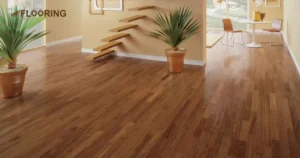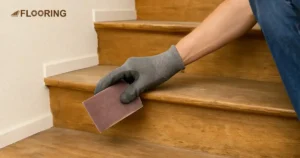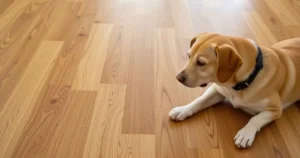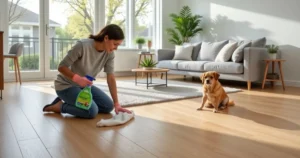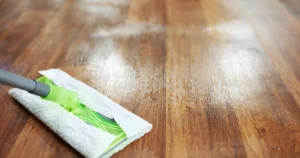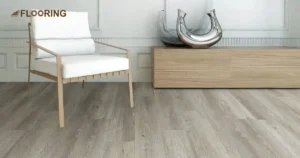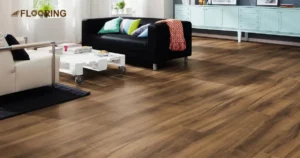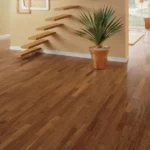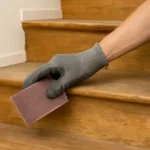When it comes to flooring options, staggering vinyl plank flooring has emerged as a strong contender. Its versatility and aesthetic appeal have made it a popular choice for homeowners and designers alike. But how does it compare to traditional flooring materials?
In this comprehensive comparison, we’ll explore the pros and cons of staggered vinyl plank flooring versus other popular options. While many homeowners are familiar with stagger laminate flooring, the same principle applies to vinyl planks, offering similar aesthetic benefits. We’ll break down the key factors to help you make an informed decision for your space.
📑 Table of Content
Key Takeaways
- Staggering vinyl plank flooring offers superior water resistance compared to most traditional flooring options.
- The staggering technique enhances the stability and aesthetic appeal of vinyl plank floors.
- Staggered vinyl planks are more affordable and easier to maintain than hardwood or ceramic tile.
- While durable, staggered vinyl plank flooring can’t be refinished like hardwood or engineered wood floors.
- Proper installation of staggered vinyl planks can significantly improve the longevity and performance of the flooring.
Comparing Staggered Vinyl Plank to Popular Flooring Options
Staggering vinyl plank flooring offers unique advantages over other flooring types. Unlike limited options in other materials, vinyl plank flooring colors and styles range widely, allowing for greater design flexibility in any room. Its installation method enhances both aesthetics and stability. Let’s compare it to some popular alternatives:
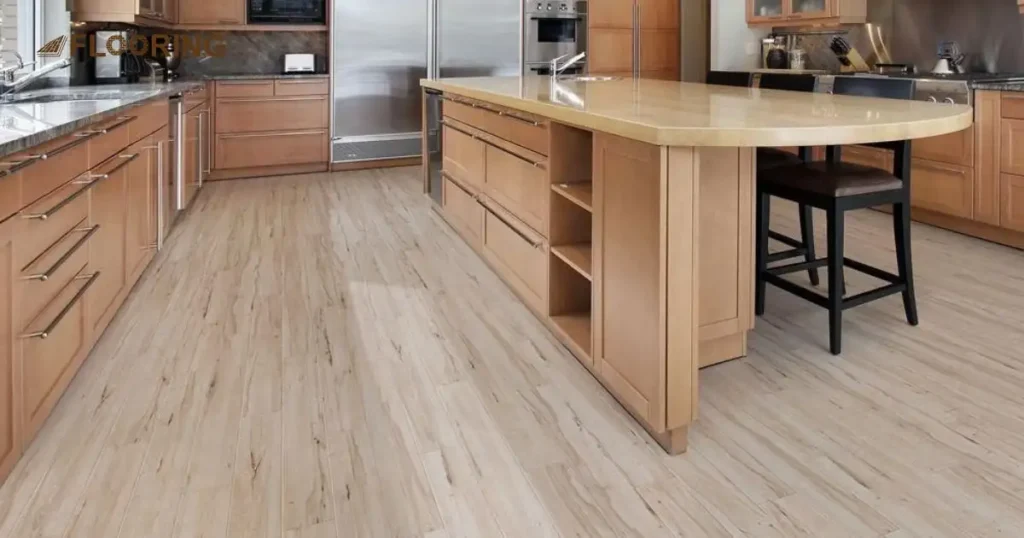
Vinyl Plank vs. Ceramic Tile Flooring
Vinyl plank and ceramic tile are both durable options with distinct characteristics. Here’s how they compare:
| Feature | Vinyl Plank | Ceramic Tile |
| Durability | Highly resistant to scratches and dents. | Extremely durable, it can last for decades. |
| Water Resistance | Waterproof, ideal for bathrooms and kitchens. | Water-resistant when properly sealed. |
| Comfort | Softer underfoot, warmer in cold weather. | Hard and cold, it can be uncomfortable for extended standing. |
| Installation | DIY-friendly, often uses a click-lock system. | Typically requires professional installation. |
Staggered Vinyl Plank vs. Hardwood Floors
Hardwood floors are prized for their natural beauty, but vinyl plank offers similar aesthetics with added benefits:
| Feature | Vinyl Plank | Hardwood |
| Appearance | Realistic wood look, but is artificial. | Natural, authentic wood grain and texture. |
| Durability | Resistant to scratches, dents, and moisture. | It can be scratched or dented, and sensitive to moisture. |
| Maintenance | Easy to clean, no special care required. | Requires regular polishing and occasional refinishing. |
| Cost | More affordable upfront and long-term. | Higher initial cost, but can increase home value. |
Vinyl Plank Flooring Compared to Laminate
Both vinyl plank and laminate are affordable alternatives to hardwood. Here’s how they stack up:
| Feature | Vinyl Plank | Laminate |
| Water Resistance | Waterproof, suitable for bathrooms and kitchens. | Water-resistant, but not waterproof. |
| Durability | Highly durable, and resistant to scratches and dents. | Durable, but can chip or peel over time. |
| Comfort | Softer and quieter underfoot. | Harder and can be noisy when walked on. |
| Installation | Easy click-lock or peel-and-stick options. | Typically uses click-lock installation. |
Staggering Vinyl Plank vs. Carpet Installation
Vinyl plank and carpet offer very different flooring experiences:
| Feature | Vinyl Plank | Carpet |
| Comfort | Firm but softer than tile or hardwood. | Soft and warm underfoot. |
| Allergen Control | Easy to clean, doesn’t trap allergens. | It can trap dust, pollen, and other allergens. |
| Durability | Resistant to stains, wear, and tear. | Prone to staining and showing wear patterns. |
| Maintenance | Simple sweeping and occasional mopping. | Requires regular vacuuming and periodic deep cleaning. |
Vinyl Plank and Engineered Wood – A Comparison
Engineered wood offers a middle ground between vinyl and solid hardwood:
| Feature | Vinyl Plank | Engineered Wood |
| Composition | 100% synthetic. | Real wood veneer over plywood or fiberboard. |
| Water Resistance | Waterproof. | Better than hardwood, but not waterproof. |
| Installation | Floating floor or glue-down. | Floating floor, glue-down, or nail-down. |
| Refinishing | It cannot be refinished. | Can be refinished, but limited time. |
The Staggering Technique – Vinyl Plank’s Advantage
Staggering vinyl planks during installation offers several benefits. This technique enhances both appearance and performance. Here are the key advantages:
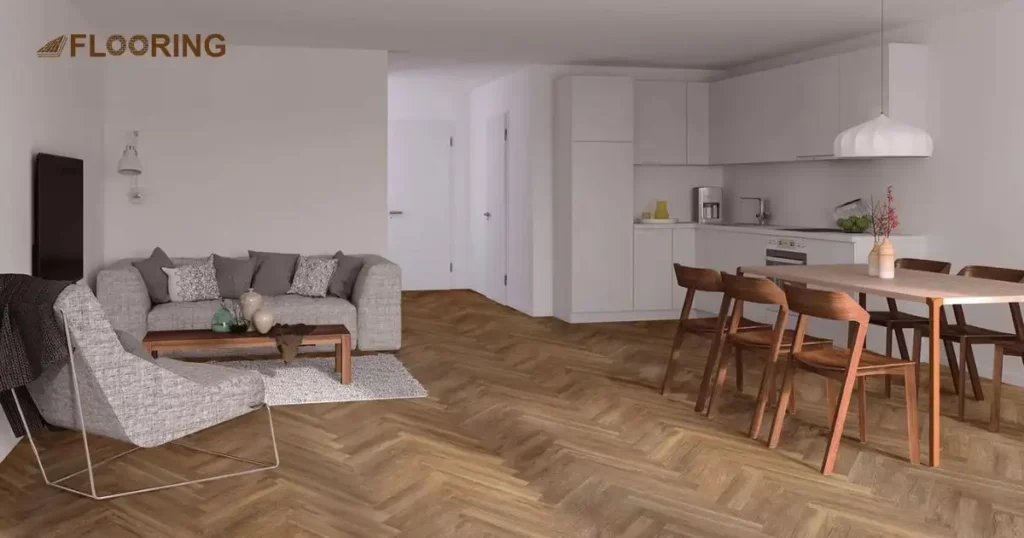
- Improved Aesthetics: A staggered pattern creates a more natural, wood-like appearance.
- Enhanced Stability: Staggering joints between planks increases overall floor stability.
- Better Moisture Resistance: Offset seams help prevent moisture from seeping between planks.
- Reduced Waste: Staggering allows for better use of cut pieces.
- Customizable Layouts: The staggering technique allows for various patterns.
- Disguises Imperfections: A staggered layout helps hide minor subfloor imperfections.
Installation Methods for Staggered Vinyl Plank Flooring
Installing staggered vinyl plank flooring requires careful planning and execution. Follow these steps for a successful installation:
Step 1: Prepare the Subfloor
Ensure the subfloor is clean, dry, and level. Remove any debris or old flooring.
Step 2: Acclimate the Planks
Allow the vinyl planks to adjust to room temperature for 48 hours before installation.
Step 3: Plan the Layout
Measure the room and determine the direction of the planks. Start with a full plank at the most visible wall.
Step 4: Begin Installation
Start in a corner and work your way across the room, using spacers for expansion gaps.
Step 5: Stagger the Planks
Offset each row by at least 6 inches to create a staggered pattern. Vary the lengths for a natural look.
Step 6: Cut and Fit
Use a utility knife or saw to cut planks as needed for a precise fit around obstacles.
Step 7: Finish the Edges
Install baseboards or quarter-round molding to cover expansion gaps and complete the look.
Durability and Water Resistance of Staggered Vinyl Planks
Staggered vinyl plank flooring offers exceptional durability and water resistance. The staggering technique enhances these properties by distributing weight evenly and minimizing seams. Vinyl planks are designed to withstand heavy foot traffic, resist scratches, and repel water.
Most vinyl plank flooring is 100% waterproof, making it ideal for bathrooms, kitchens, and basements. The interlocking system and staggered layout create a tight seal that prevents water from seeping through. This water resistance also makes vinyl planks easy to clean and maintain.
The durability of vinyl planks comes from their multi-layer construction. A wear layer protects against scratches and stains, while the core provides stability and impact resistance. When properly installed in a staggered pattern, vinyl plank flooring can last 10-20 years or more with proper care.
Pros and Cons of Staggered Vinyl Plank Flooring
Staggered vinyl plank flooring offers many benefits but also has some drawbacks. Consider these pros and cons:
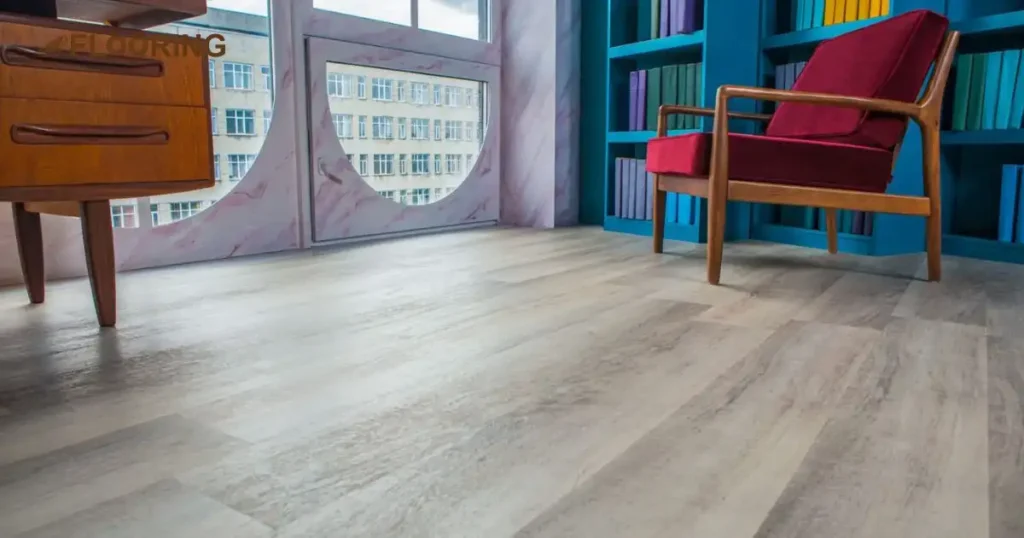
| Pros | Cons |
| Highly durable and resistant to wear. | It cannot be refinished like hardwood. |
| Waterproof and suitable for any room. | This may lower home resale value compared to natural materials. |
| Easy to clean and maintain. | It can be punctured by sharp objects. |
| Affordable compared to hardwood or tile. | Some may find it less comfortable than carpet. |
| Wide variety of styles and colors available. | It’s not biodegradable, raising environmental concerns. |
| DIY-friendly installation. | This may emit VOCs initially after installation. |
Final Words
Staggering vinyl plank flooring offers a compelling combination of aesthetics, durability, and practicality. Its combination of durability, water resistance, and aesthetic appeal makes it a strong competitor against traditional flooring options. The staggering technique enhances these benefits, providing improved stability and a more natural appearance.
The staggering technique enhances its benefits, making it a versatile choice for many homes. The best way to stagger laminate flooring is similar to vinyl planks, emphasizing the importance of proper installation techniques for optimal results. Consider your specific needs, budget, and style preferences when choosing between vinyl plank and other flooring types.
Frequently Asked Questions
Can staggered vinyl plank flooring be installed over existing tiles?
Yes, staggered vinyl plank flooring can often be installed over existing tiles. Ensure the tile surface is level and clean. Use a self-leveling compound if needed before installation.
How does staggered vinyl plank flooring impact home resale value?
Staggered vinyl plank flooring can positively impact resale value. It offers an attractive, low-maintenance option that appeals to many buyers. However, it may not add as much value as hardwood flooring.
Is staggered vinyl plank flooring suitable for radiant heat systems?
Many vinyl plank flooring options are compatible with radiant heat systems. Check the manufacturer’s specifications before installation. Staggered installation can help distribute heat more evenly.
How do I clean and maintain staggered vinyl plank flooring?
Clean staggered vinyl plank flooring with a damp mop and mild cleaner. Avoid harsh chemicals or abrasive tools. Regular sweeping and prompt spill cleanup will maintain its appearance.
Can staggered vinyl plank flooring be used outdoors?
Most vinyl plank flooring is designed for indoor use only. Some specialized outdoor vinyl planks exist, but standard indoor vinyl planks may warp or fade if used outside.
How long does it take to install staggered vinyl plank flooring?
Installation time for staggered vinyl plank flooring varies based on room size and complexity. A medium-sized room typically takes 1-2 days for a DIY installation, including preparation and staggering.
Are there sound-dampening options for staggered vinyl plank flooring?
Yes, many vinyl plank flooring options come with built-in underlayment for sound dampening. Additional underlayment can be used with staggered vinyl plank installation for enhanced noise reduction.

